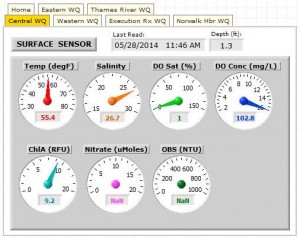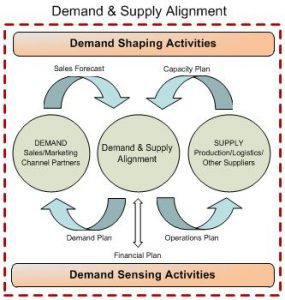For supply chain managers and analysts Getting Demand in Shape can mean collecting the most pertinent data to support specific business processes and activities. Identifying new or previously unused data sources can be especially important.
My most recent article titled “Getting Demand in Shape” in the May / June issue of APICS magazine takes the reader down a path that begins with the process of sensing, interpreting and responding to data in a way that will help organizations improve supply chain visibility and profitability. The article identifies two specific supply chain activities that can benefit from the availability of additional pertinent data. Demand sensing and demand shaping are explored and highlighted as effective processes to help improve supply chain alignment, customer satisfaction and profitability.
 What is Demand Sensing? Intuitively, we all take notice of information as part of our normal day. You look at the temperature on our thermostats before we leave for work. You glance down at your automobile gauges to check for mechanical problems or validate our speed. Or, if you're like me, you might check ocean gauges located in local bays and waterways to evaluate water temperature and currents. Either way, sensing signals are a part of our day-to-day life that help us better prepare and plan for the day ahead.
What is Demand Sensing? Intuitively, we all take notice of information as part of our normal day. You look at the temperature on our thermostats before we leave for work. You glance down at your automobile gauges to check for mechanical problems or validate our speed. Or, if you're like me, you might check ocean gauges located in local bays and waterways to evaluate water temperature and currents. Either way, sensing signals are a part of our day-to-day life that help us better prepare and plan for the day ahead.
When considering what a dynamic demand management process might look like, it’s important to remember that acquiring, analyzing and monitoring sensing signals effectively can help to provide visibility into unexpected or unplanned events. This can have a significant benefit when aligning demand and supply while improving profitability.
Demand sensing is a specialized type of monitoring that identifies changes occurring in real or near-real time. The demand sensing process analyzes web data, social media, email, collaborative customer data, sales and marketing data, and macroeconomic indicators to support demand and supply synchronization. The results can be useful especially when managing a manufacturing supply chain under the umbrella of a Sales and Operations Planning Process (S&OP).
Putting signals to work. Although sensing signals provide a vast source of information that might not have been available before, it is certainly not the sole provider of dynamic supply and demand alignment. What we do with information in the form of “sensing signals” really does matter! Signals can often be ignored or discarded within an S&OP process as a result of conflicting corporate or departmental goals. Internal politics can play havoc on supply chain sensing signals because sensing signals often tell the truth unaffected by outside interests. In order to make these sensing signals come to life, an organization engaged in a robust S&OP process needs to embrace what they discover and then use this new found data effectively.
A supply chain process that works hand in hand with demand sensing is called Demand Shaping. Demand shaping is defined as an activity that uses available information, including demand-sensing data, to develop an optimized demand and supply plan that meets profitability and customer satisfaction metrics. Demand shaping has three primary elements:
- A strategic process that supports real-time and future demand and supply balancing independently or part of an overall S&OP process.
- A dynamic method that can increase revenue while reducing costs.
- A cross-functional process that includes all supply chain stakeholders.
Although manufacturing is the most obvious beneficiary of demand sensing and shaping capability it’s certainly not the only industry that can benefit. Recently I read about a company hired by the New York City Department of Transportation to take “real time” measurements of pedestrians walking around New York City streets. They use existing video feeds and convert what is recorded into data using advanced analytics. Considering that 60 percent of New Yorkers travel within the city by foot or transit, this data can be very useful.
One way that this data is being considered for use is integration with consumer apps like Yelp or Google maps. What if you could use this data to determine wait times at restaurants or movies? Even better yet, what if these same restaurants or movies could use this data to monitor real time or near real time what’s happening at each location? They could then take corrective action to potentially maximize their profits and improve customer service.
The goal of any demand sensing process is to provide insight and foresight into demand patterns, correlations and anomalies that cause demand and supply misalignment, regardless of the industry. Whether we like it or not, data is everywhere. For savvy supply chain managers there is a huge opportunity like never before to take the appropriate actions through demand shaping activities to eliminate misalignments, increase customer service levels and improve profitability.
To read more about demand sensing, shaping, big data and analytics, download the whitepaper, “Unlocking the Promise of Demand Sensing and Shaping through Big Data Analytics.”
